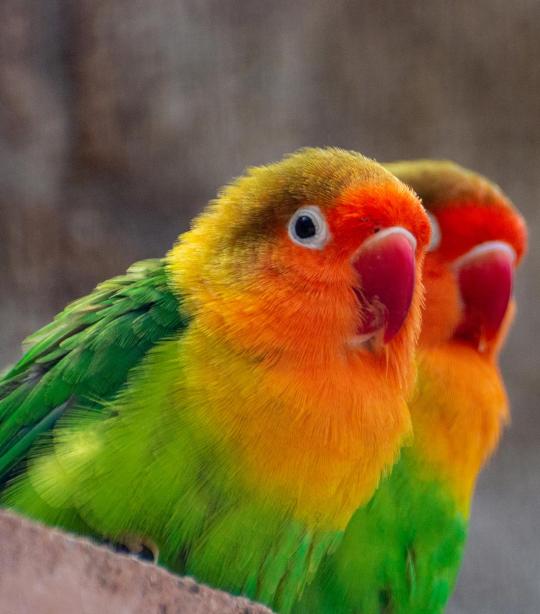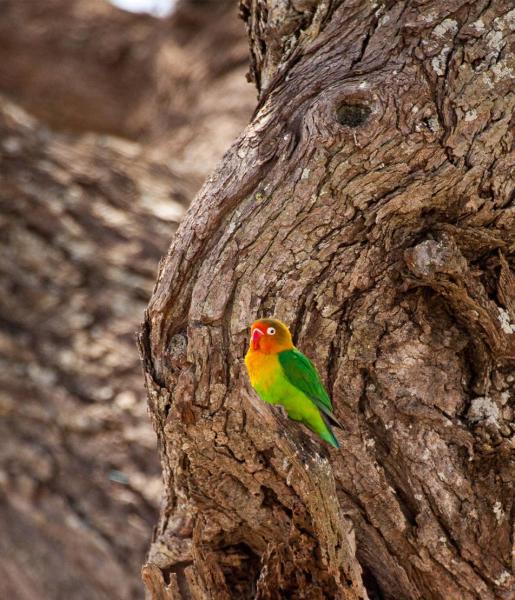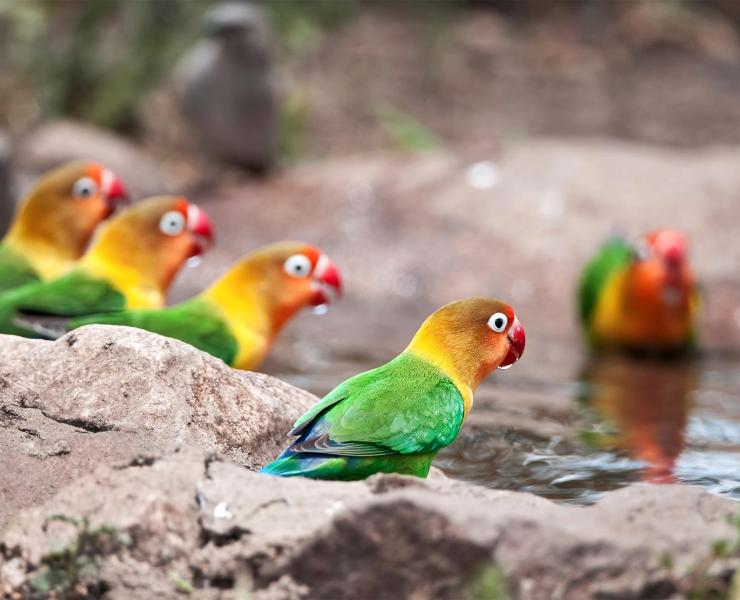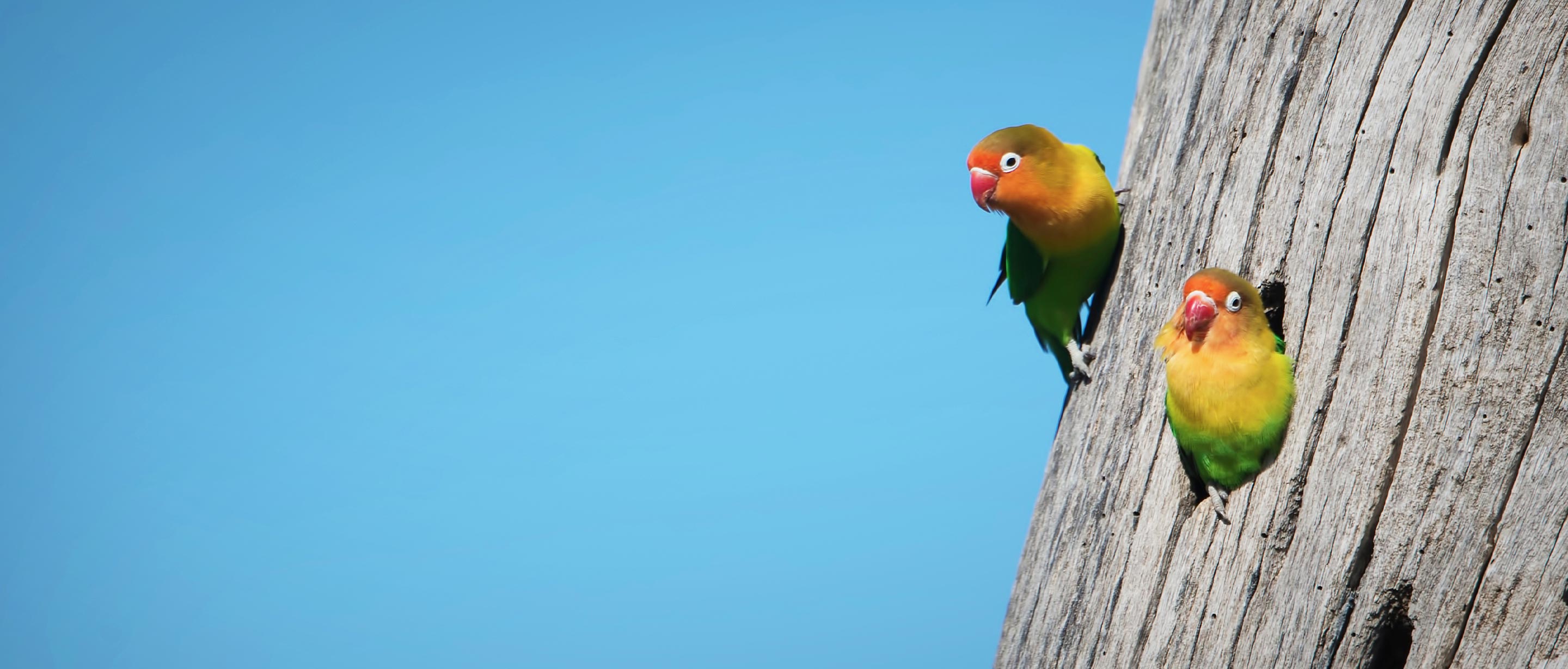What are Fischer’s lovebirds?
The brightly colored small parrot — named after Gustav Fischer — was discovered in the 19th century. Females and males are identical in appearance and do not exhibit sexual dimorphism. They have a green back, chest, and wings. The bird’s neck is golden yellow to orange color, which deepens into a deeper orange-red on its face. The lovebird’s beak is red, and the top of the head is olive green. It may also have blue or purple-colored plumage on the tail. The remainder of the body is a vibrant green.
Agapornis fischeri
Up to 58 grams (2 ounces)
Height: 12 to 15 centimeters (5 to 6 inches) Wingspan: up to 9 centimeters (3.5 inches)
Up to 25 years
Grasslands, semi-arid woodlands, and savannas
Mostly granivorous
21 to 23 days
Lanner falcon, humans

Challenges
Their beautiful plumage makes them attractive pets.
Humans are responsible for the declining populations of Fischer’s lovebirds. The major decline began in the 1970s, due to widespread trapping for captivity. In 1987, the Fischer’s lovebird was the most commonly traded bird in the world. Current population numbers are estimated to be between 290,000 to 1,002,200. Even though legal trapping has been halted, the trade still exists, climate change has caused several severe winters, and unsustainable development all continue to threaten this species.
Some farmers consider the Fischer’s lovebird to be a pest.
They feed on seeds, and on occasion fruits, and they can sometimes be found in agricultural areas or farmland, where they feed on crops. They are generally seen in small flocks but during feeding times their flocks can grow well into the hundreds. These high numbers can cause damage to fruit and crops, causing farmers to target them as pests.
Solutions
Our solutions to protecting the Fischer’s lovebird:
African Wildlife Foundation influences policies on wildlife trade and trafficking and works to enforce harsher punishments for poachers and traffickers.
We are educating communities on the ecosystem and economic benefits of wildlife, like the Fischer’s lovebird, and we are also working with communities to set aside protected land for wildlife — in the form of conservancies.


Behaviors
They are inseparable.
The Fischer’s lovebird is named for the strong bonds formed between mating pairs. These birds mate for life and are monogamous. Lovebirds show each other affection and are known for biting, or nipping, each other’s beaks — a behavior that makes them look as though they are kissing, which is where the common name “lovebird” arose. If a pair is separated, then the physical health of each individual will suffer.
Fischer’s lovebirds have a niche.
These parrots are cavity nesters. They find natural cavities in trees, rocks, or buildings and use them to construct their nests. The nests are built using grass, stalks, and bark and have a roof over them. Females lay three to eight small, white eggs per clutch, which hatch after 21 to 23 days of incubation and fledglings become independent after four and half weeks after hatching.
Diet
They are heavy drinkers.
Fischer’s lovebirds drink daily and live near water. They are not migratory but will migrate if water sources become unavailable. On particularly hot days, they can be found near water holes or water sources where they can drink several times throughout the day.
Habitats
Where do Fischer’s lovebirds live?
The Fischer’s lovebird is endemic to north-central Tanzania, where they inhabit grasslands, woodlands, savannas, and scrub forests. They will also live in areas with crops and agriculture.



